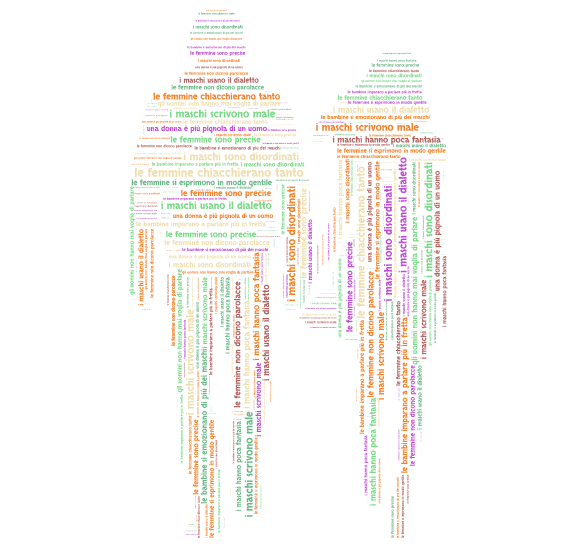Il linguaggio femminile e maschile: uno scenario (stereotipico) in movimento
by Rita Fresu
Various studies have both demonstrated that differences in feminine and masculine language are part of a social construct strongly correlated to diastratic and diaphasic factors and revealed the existence of a consolidated set of expectations held by a community of speakers with regard to the linguistic behaviors attributed to gender. The shared understanding of this strong social norm and expectation, together with the modern changes that have taken over
relations between the sexes and the roles attributed to them, are progressively modifying the perception of difference in speakers’ understandings of their own language, favoring the emergence of new stereotypes. In this obviously dynamic context, certain fields—such as those relating to the rooting and development of preconceived understandings of masculine and feminine language in infancy and adolescence, their propagation through scholastic materials and environments, and their added promotion through the media— remain under represented. Building on this foundation, the article illustrates and discusses the results of several sociolinguistic studies conducted throughout various geographic domains over the course of the last four years on a cross-section of children and teenagers and compares them with
analogous studies conducted in the past. The results of this inquiry allow the scholar to delineate the expectations of the youngest members of society with regard to linguistic behaviors tied to gender and to outline specific traits considered (stereo) typically masculine or feminine. Overall, the data obtained may further stimulate the reflection necessary to bring
into focus the development of conceptual schemas that takes place in the delicate transition from infancy into adolescence and to generate working hypotheses regarding processes of diffusion and retention governing linguistic stereotypes among adults.

